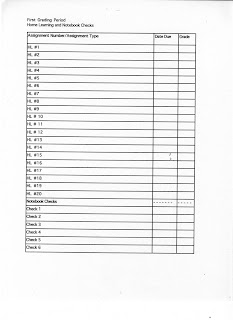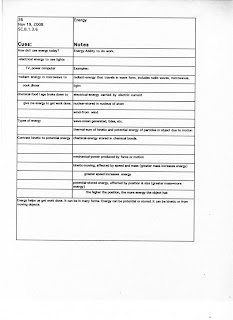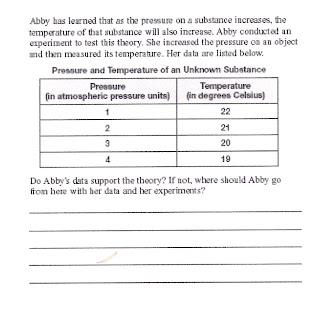Welcome to Dr. Gayden's Science Zone! Here, you can check class assignments, find handouts, and find links to other assignments. Here are all the pages needed for your interactive science notebook, and them some. Pay attention to the order and to what goes on each page. Remember, the first nine pages (4.5 sheets) are for the table of contents.
Below is a welcome letter to parents.


Welcome to Dr. Gayden's Science Class...The Science Zone!
Below, find the contact forms and contracts for the class.


Below, find the page that describes how to set up the interactive notebook:

Below, find the page that should be on the INSIDE FRONT COVER (8th Grade Annually Assessed Benchmarks)

Below, find the TWO pages for page 1 of the notebook (after setting aside the first NINE pages for the table of contents. These two sheets should both be on page 1. Place the sheet numbered 1-25 on the BOTTOM. Place the sheet with HL #1-20 and NB check 1-6 on the TOP. Be sure you can see and write on BOTH pages.


Below, find the Cornell notes page, which should go on page 5 of your notebook.

Below, find the yearly assignments page, which should go on page 6 of your notebook. Assignments are subject to change. Check with the instructor to determine if any changes are to be made for a specific grading period.

Below, find Dr. Gayden's 3Rs, which stresses the rules, regulations, and requirements, including the grading scale and list of materials for class. This goes on page 7.

Below, find the Rules and Regulations for the class. This goes on page 8.

Below, find the safety regulations. These go on page 9.

Below, find the page that explains how all home learning is to be written and headed. This goes on page 10.

Below, find page A for the back of your notebook. This is the metric ladder.

Below, find page B for the back of your notebook. This is the Periodic Table of Elements

Below, find the Grade 8 FCAT Science Reference Sheet, which belongs on page C of your notebook.
href="http://4.bp.blogspot.com/_6Oo6sj3xSrM/SMckw1aHnvI/AAAAAAAAA2I/MdG6iw5vyuM/s1600-h/fcat+ref+sheet.jpg">

Below, find the Science Equations/Benchmark Numeration System, which belongs on page D of your notebook.

Below, find the Lab Safety Skills sheet, which belongs on page E of your notebook.

Below, find Costa's Levels of Questioning, which belongs on page F of your notebook.

Below, find the Quality QUestions, which go on page G of your notebook.

Below, find the adult imput page, which should go on page H of your notebook (it's the last paper page!)

Below, find the teacher contact information, which goes on the INSIDE BACK COVER of your notebook.

The following pages are for the graphing lab notebook:
They should be placed in the notebook in this order:
Inside front cover - Equations page
Page 1, 2, and 3 - Table of Contents (DO NOT NUMBER THESE PAGES, JUST PLACE THEM ON THE FIRST THREE PAGES) The exact same sheet goes on all three pages.


Finally, find three pages to help you with writing Cornell notes. There are examples and explanations.






































